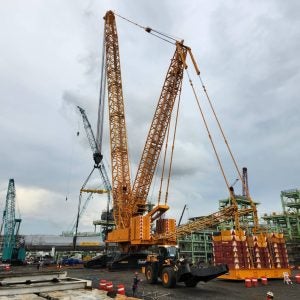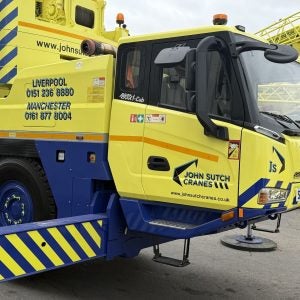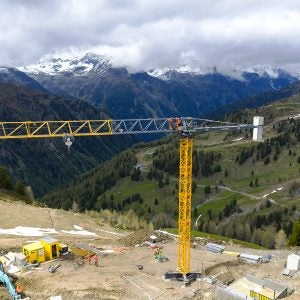 ( The picture is courtesy of Transport Scotland)
( The picture is courtesy of Transport Scotland)
The main contractor is FCBC (Forth Crossing Bridge Constructors), a joint venture comprising Morrison Construction, HOCHTIEF, American Bridge and Dragados.
The new bridge is due to open in 2017 and forms the centerpiece of an upgrade to the important cross-Forth transport corridor.
The project was established after corroded cables on the existing Forth Road Bridge caused concern about the future of the bridge. At 2,637m long, the Queensferry Crossing will be the second-longest three-tower cable-stayed bridge in the world. The towers are 650m apart, with 146m of cable crossover, designed to stop the central tower swaying.
Ainscough’s crane fleet has operated on site from the early stages of its construction. Most recently, Ainscough’s team has been working on the emerging road deck of the bridge.
The project has brought a number of challenges such as how to position a crane on the roadway which is yet to be connected to the land. The solution was to lift a Liebherr LTM 1055-3.2, 55t all terrain crane onto a completed section of roadway using the tower crane connected to one the bridge’s 207m (679 ft) high towers.
After being stripped of its non-essential components and positioned beneath the tower crane aboard a service barge, the crane was lifted into position and subsequently re-assembled for use in the bridge’s ongoing construction.
Depot manager at Ainscough’s Falkirk Depot, Ciaran McNamee said: “The Queensferry Crossing has been a remarkable job to be involved with. We have had between four and six cranes on site every day for the last three and half years and have watched the bridge slowly emerge through the unified efforts of the contractors on site. We are very proud of our involvement in the project and that we are helping to deliver this major piece of new infrastructure to the people of Scotland.”






